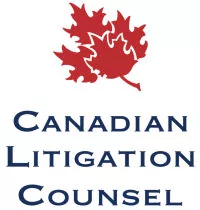The Supreme Court's recent decision in Annapolis Group Inc. v Halifax Regional Municipality, 2022 SCC 36 [Annapolis] clarified the test for a "constructive taking" by a regulatory body.
Background
In that case, a private property owner (Annapolis Group Inc. ("Annapolis")) owned 1,000 acres of undeveloped land in the Halifax Regional Municipality (the "Municipality"). Annapolis' ambitions to develop its land were frustrated by the Municipality's bylaws and community plan, which combined to prohibit any development on Annapolis' land for at least 25 years. Annapolis sued the Municipality for $120 million, claiming that the Municipality's bylaws and community plan amounted to a "constructive taking" of Annapolis' property. A majority of the Supreme Court allowed Annapolis' appeal, and directed that Annapolis' claim proceed.
Constructive Takings
A constructive taking is similar to an expropriation. But unlike a formal expropriation where a regulatory body (like a municipality or other government entity) forcibly takes title to private property, a constructive taking occurs without the regulatory body ever formally taking title to the property. A constructive taking instead occurs when a regulatory body exercises its regulatory power to: (i) acquire a "beneficial interest" in a person's private property in a way that (ii) deprives the owner of "all reasonable uses" of the private property.
The Constructive Taking
In a decision co-authored by Justices Brown and Côté, a five-judge majority of the Supreme Court in Annapolis held that a regulatory body obtains a "beneficial interest" in private property when it uses its regulatory power to obtain an "advantage".
An advantage can take many forms. In Annapolis, for example, the Municipality enacted a development plan and associated bylaws that restricted development of private property for 25 years. Annapolis' land (which it had acquired prior to the enactment of that plan and those bylaws) was subject to the plan and bylaws. The Municipality also publicly advertised that Annapolis' private property was accessible as a public park, and invited the public to camp and hike on the private property. This, the majority of the Court held, was an "advantage" to the Municipality which it obtained through its normal bylaw-making power.
The majority opinion also concluded that, by preventing all development on the property for (at least) 25 years, the Municipality had deprived Annapolis of "all reasonable uses" of its land. The Court therefore allowed the private property owner's claim for damages for a constructive taking to proceed.
Conclusion
Constructive takings claims are still rare. Regulators generally have wide latitude to regulate in the public interest. The majority opinion in Annapolis, however, represents a landmark decision in favour of private property rights that will likely expand the frequency and scope of litigation to which regulators must respond. Following Annapolis, regulators, like municipalities, will need to tread especially carefully when enacting regulations that interfere with private property rights.
Originally published 16 December 2022
The content of this article is intended to provide a general guide to the subject matter. Specialist advice should be sought about your specific circumstances.


